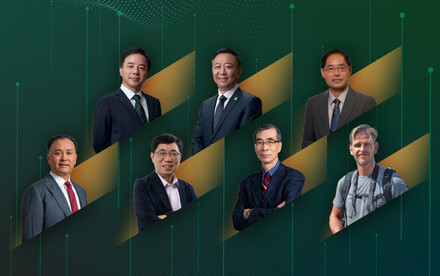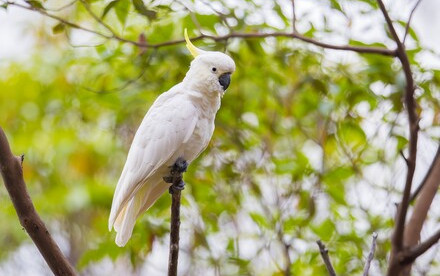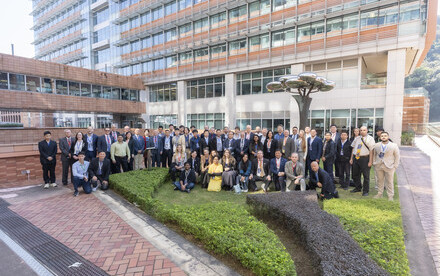10 Dec 2022
International Astrophysicists Suggest Unseen Stellar Companions Shaping the Planetary Nebula’s Peripheral Layers

Two Views of the Gas in the Southern Ring Nebula (NIRCam and MIRI Composite Images)
Led by Space Telescope Science Institute and Macquarie University, an international team of astrophysicists including members of Laboratory for Space Research (LSR) at The University of Hong Kong (HKU), recently found that up to three unseen stellar companions that may have shaped the planetary nebula’s layers of gas and dust. The team's paper, entitled ‘The messy death of a multiple star system and the resulting planetary nebula as observed by JWST’, has been published in Nature Astronomy.
‘I am honoured to have played a small part in this wonderful paper lead by colleague Orsola de Marco at Macquarie University Sydney. This paper has made the most of the exciting new capabilities of the James Webb Space Telescope via an excellent paper from the leaders of the international PN community, said Professor Quentin PARKER, Director of LSR.
Spotting not all stars in the Southern Ring Nebula show up as bright as each other, the research team dug into Webb’s highly detailed images of the Nebula to reconstruct the scene. It’s possible more than one star interacted with the dimmer of the two central stars, which appears red in this image, before it created this jaw-dropping planetary nebula. The first star that ‘danced’ with the party’s host created a light show, sending out jets of material in opposite directions. Before retiring, it gave the dim star a cloak of dust. Now much smaller, the same dancer might have merged with the dying star – or is now hidden in its glare.
A third partygoer may have gotten close to the central star multiple times. That star stirred up the jets ejected by the first companion, which helped create the wavy shapes we see today at the edges of the gas and dust. Not to be left out, a fourth star with an orbit projected to be much wider, also contributed to the celebration. It circled the scene, further stirring up the gas and dust, and generating the enormous system of rings seen outside the nebula. The fifth star is the best known – it’s the bright white-blue star visible in the images that continues to orbit predictably and calmly.
The final showstopping finding is an accurate measurement of the mass that the central star had before it ejected its layers of gas and dust. Researchers estimate the star was about three times the mass of the Sun before it created this planetary nebula – and about 60 percent of the mass of the Sun after. It’s still early days – this is some of the first published research about some of Webb’s first images to be released, so plenty more details are sure to come.
Some of the first data from NASA’s James Webb Space Telescope has shown there were at least two, and possibly three, more unseen stars that crafted the oblong, curvy shapes of the Southern Ring Nebula. Plus, for the first time, by pairing Webb’s infrared images with existing data from European Space Agency’s) Gaia observatory, researchers were able to precisely pinpoint the mass of the central star before it created the nebula. A team of almost 70 researchers led by Orsola De Marco of Macquarie University in Australia, analysed Webb’s 10 highly detailed exposures of this dying star to produce these results.
Their calculations show the central star was nearly three times the mass of the Sun before it ejected its layers of gas and dust. After those ejections, it now measures about 60 percent of the mass of the Sun. Knowing the initial mass is a critical piece of evidence that helped the team reconstruct the scene and project how the shapes in this nebula may have been created.
Let’s start with the top-tier celebrity of this particular ‘party’, the star that sloughed off its layers of gas and dust over thousands of years. It appears red in the image on the left because it is surrounded by an orbiting, dusty disk similar in size to our solar system’s Kuiper Belt. While some stars expel their layers as solo acts ‘on stage’, researchers propose that there were a few companions with front row seats – and at least one that may have joined the central star before it began to create the Southern Ring Nebula.
It’s common for small groups of stars, spanning a range of masses, to form together and continue to orbit one another as they age. The team used this principle to step back in time, by thousands of years, to determine what might explain the shapes of the colourful clouds of gas and dust.
First, they focused on the aging star that cast off its layers and is still surrounded by a dusty red ‘cloak’ of dust. Extensive research about these types of aging stars shows that dusty cloaks like these must take the form of dusty disks that orbit the star. A quick dive into the data revealed the disk.
Before the dying star shed its layers, the team proposes that it interacted with one or even two smaller companion stars. During this intimate ‘dance’, the interacting stars may have launched two-sided jets, which appeared later as roughly paired projections that are now observed at the edges of the nebula.
Where are those companions now? They are either dim enough to hide, camouflaged by the bright lights of the two central stars, or have merged with the dying star.
The complex shapes of the Southern Ring Nebula are more evidence of additional unseen companions – its ejections are thinner in some areas and thicker in others. A third closely interacting star may have agitated the jets, skewing the evenly balanced ejections like spin art. In addition, a fourth star with a slightly wider orbit might have also ‘stirred the pot’ of ejections, like a spatula running through batter in the same direction each time, generating the enormous set of rings in the outer reaches of the nebula.
What about the very bright blue-white star in Webb’s images? Think of the fifth star like the most responsible party guest that continues to orbit the dying star slowly, predictably, and calmly.
The two images shown here each combine near-infrared and mid-infrared data to isolate different components of the nebula. The image at left highlights the very hot gas that surrounds the central stars. The image at right traces the star’s scattered molecular outflows that have reached farther into the cosmos.
The research paper can be accessed from here: https://www.nature.com/articles/s41550-022-01845-2
This article is adapted from the press release of NASA’s James Webb Space Telescope.
About LSR:
The LSR is well situated in a dynamic region of Asia to foster links with the astrophysics, space and planetary sciences community in China and globally. The LSR’s interdisciplinary research launches various bids to exploit and access the emerging Mainland funding and research environment. We have developed multilateral and strategic partnerships with world-leading universities, space science institutes and participate in large, international, high-impact space missions. Website: www.lsr.hku.hk
#EmissionNebulas #NebulasPlanetary #NebulasWhiteDwarfs







